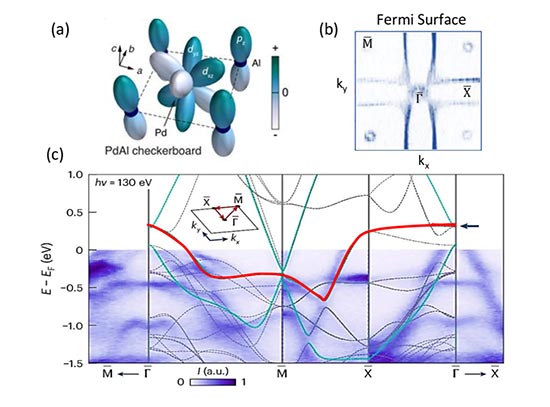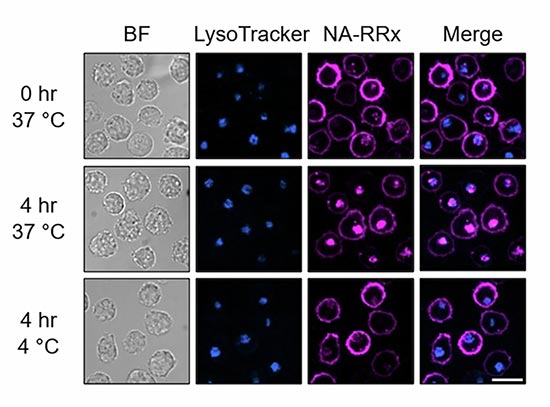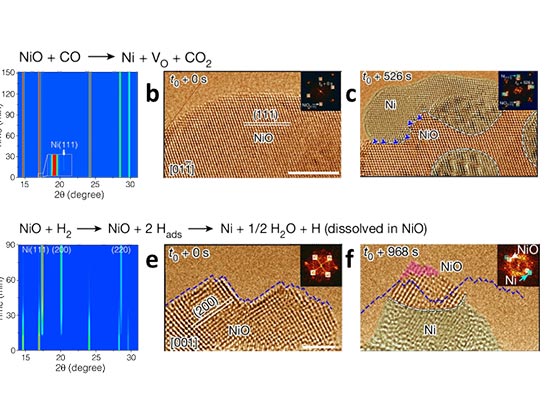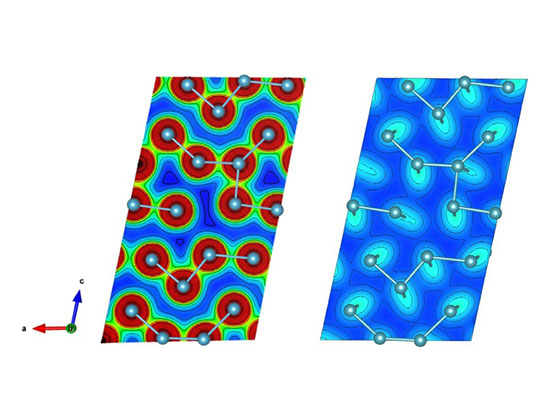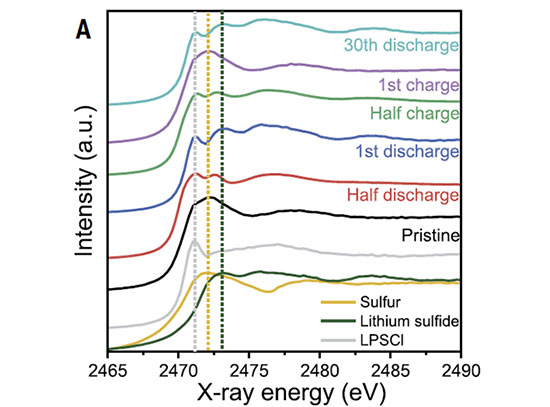Unlocking the Secrets of Metal-Insulator Transitions
Researchers used soft x-ray photon correlation spectroscopy at NSLS-II's CSX beamline to investigate the metal-insulator transition of magnetite
March 31, 2019
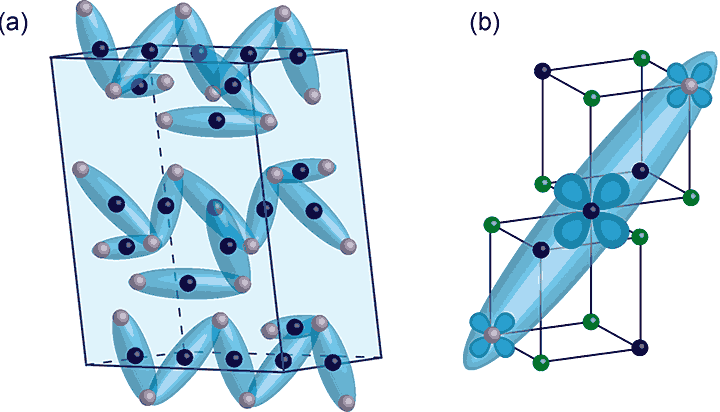
The left image (a) shows a monoclinic unit cell of magnetite with trimerons representing the electronic order and lattice distortions, while the image (b) on the right shows the charge and orbital ordering associated with the trimeron.
The Science
Scientists revealed a two-step process underlying the metal-insulator (Verwey) transition in an archetypal strongly correlated material.
The Impact
Understanding the characteristic timescales and length scales of the electronic, magnetic, and structural properties of correlated materials is essential for future applications of oxide electronics.
Summary
By using soft x-ray photon correlation spectroscopy (XPCS) at the Coherent Soft X-ray scattering (CSX) beamline of the National Synchrotron Light Source II (NSLS-II)—a DOE Office of Science User Facility at DOE’s Brookhaven National Laboratory—scientists found that the metal-insulator transition in the correlated material magnetite is a two-step process.
Nanoscale investigation of the characteristic timescales and length scales involved for orbital ordering across a strongly correlated material is essential for understanding the electronic, magnetic, and structural properties of these correlated materials for future applications.
In the case of magnetite, the metal-insulator phase transition, known as the Verwey transition, is characterized by a charge-orbital ordering and a lattice transformation from a cubic to monoclinic structure. To investigate this transition, the researchers used soft x-ray photon correlation spectroscopy (XPCS) and found that the process first speeds up and then that the orbital fluctuations slow down near the Verwey transition temperature. This slowdown is correlated with the decrease in correlation length for orbital ordering and the onset of metallic domains, which seem to pin down the remaining orbital-ordered insulating domains.
The collaborative study between users and beamline scientists at NSLS-II demonstrates the crucial role of nanoscale heterogeneities during metal-insulator transitions.
Download the research summary slide
Related Links
Feature Story: “Unlocking the Secrets of Metal-Insulator Transitions”
Contact
Roopali Kukreja
University of California
rkukreja@ucdavis.edu
Nelson Hua
University of California
nehua@ucsd.edu
Oleg G. Shpyrko
University of California
oshpyrko@physics.ucsd.edu
Publications
R. Kukreja, N. Hua, J. Ruby, A. Barbour, W. Hu, C. Mazzoli, S. Wilkins, E. E. Fullerton, O. G. Shpyrko. “Orbital Domain Dynamics in Magnetite below the Verwey Transition”, Phys. Rev. Lett. 121, 177601 (2018). DOI: 10.1103/PhysRevLett.121.177601
Funding
Sample growth and transport measurements were supported by NSF Grant No. DMR-1411335. Characterization was supported by the AFOSR Grant No. FA9550-16-1- 0026 and a University of California collaborative Grant No. MRPI MR-15-328-528. Synchrotron Coherent X-ray Scattering studies were supported by U.S. Department of Energy, Office of Science, Office of Basic Energy Sciences, under Contract No. DE—SC0001805. This research used resources from the Coherent Soft X-Ray Scattering (CSX) beamline 23-ID-1 of the National Synchrotron Light Source II (NSLS-II), a U.S. Department of Energy (DOE) Office of Science User Facility operated for the DOE Office of Science by Brookhaven National Laboratory under Contract No. DE-SC0012704.
2019-16694 | INT/EXT | Newsroom




